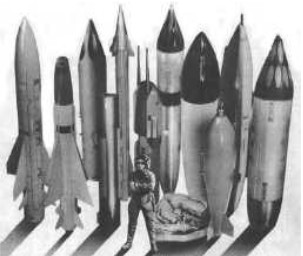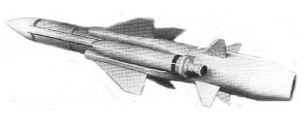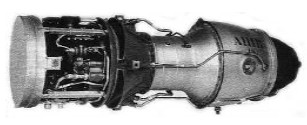Updated: 02-Jun-2020
Originally it is the Societe Generale de Mecanique -Aviation- et TRAction.
-In 1937 Marcel Chassagny founded the company Catra (Compagnie anonyme de production et réalisation aéronautique). In 1941, this company changed its name to Matra to manufacture weapons for the armed forces.
-In 1998 Matra joined Aerospatiale and they continued under the name Aerospatiale-Matra.
-In 2000 Aerospatiale-Matra, together with the German DASA and the Spanish CASA form EADS, now Airbus.
In 2001, a merger was formed between Aérospatiale-Matra (the French part of EADS), Finmeccanica (now Leonardo), and Matra BAe Dynamics under the name MBDA (view)
-Finally the resulting European company is MBDA, a division of the Airbus Group (EADS).
-The most famous product has undoubtedly been the “Exocet” air-to-surface (and surface-to-surface) missile due to its performance in the Falklands war.
-It began its life in 1967, when a model was launched from a ship. In 1974 it was launched from an airplane.
-The surface-surface was the MM-38 for example. The AM-39 was launched from the air, and the SM-39 from a submarine.

“Exocet in action”
-There were many other Matra products, especially in rockets and missiles. We are interested in learning more about a turbo-ramjet, the R-130.
-Like Leduc with its 022 aircraft, Matra made a turbo-ramjet, the R.130 project.

“Matra R.130”
-Around the crewman's cabin there are retractable air intakes, open on land and at low speed, which feed the Hispano Suiza Nene turbojet.
-A half inlet duct and before the turbojet engine there is the Riedel starter with a cardan transmission.
-The turbojet discharges into a large space that is the ramjet chamber where additional fuel will be burned. The air inlet is annular.
-At high speeds the front retractable air inlets close and if necessary the turbojet is fed by other inlets just before the ramjet intakes.
-Likewise the Leduc 022 (see) is a turbo-ramjet for high speeds, with a single front inlet, for the Atar 101 turbojet and a large ramjet behind it.

“Leduc 022”
-We also see the starter and its transmission to the turbojet.
From Appendix A2/6: Important supplier of advanced technology. In the early 1970s it already offered significant paraphernalia of weapons and guided missiles.

“Matra products”
-The Otomat (first from the left of the above photo) was made together with the Italian Oto Melara.
-The propulsion consisted of two solid fuel boosters and one turbojet of 880 lbf thrust from Turbomeca, the Arbizón III.

“Otomat”
-Otomat = OTO Melara MATra.
-Below a photograph of the Turbomeca Arbizon III which powers the Otomat.

“Arbizon III”
From Appendix 9: They inform us of two Matra engines: the P-163 (with SEPR) and the P-191.
Engines of MATRA
Model: AM-39
Arquitecture:
Chambers:
Fuels:
Feed System:
Ignition:
Thrust:
Weight:
Model: MM-38
Arquitecture:
Chambers:
Fuels:
Feed System:
Ignition:
Thrust:
Weight:
Model: R-130
Arquitecture:
Chambers:
Fuels:
Feed System:
Ignition:
Thrust:
Weight:

"Matra R.130"
Model: SEPR P-163
Arquitecture:
Chambers:
Fuels:
Feed System:
Ignition:
Thrust:
Weight:
Model: SEPR P-191
Arquitecture:
Chambers:
Fuels:
Feed System:
Ignition:
Thrust:
Weight:
Model: SM-39
Arquitecture:
Chambers:
Fuels:
Feed System:
Ignition:
Thrust:
Weight:


